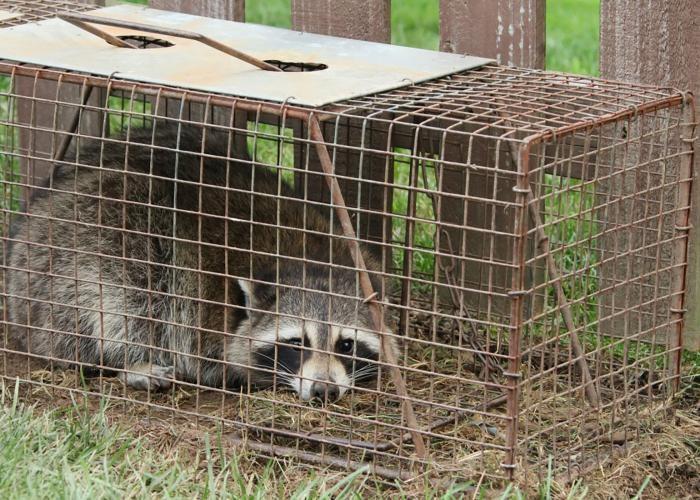Common Wildlife Issues in Virginia Beach and How Cleanup Services Help

The rustling in the attic stops. The raccoon that took up residence in your chimney is finally gone, thanks to a professional removal service. You breathe a sigh of relief, thinking the problem is solved. But days later, a faint, unpleasant odor begins to waft through the house. Or perhaps you notice dark stains seeping through the ceiling tiles. This is the hidden aftermath of a wildlife intrusion, a problem that removal alone doesn't fix.
In Virginia Beach, where our backyards blend with coastal wetlands and wooded areas, encounters with wildlife are a fact of life. While professional wildlife animal removal in Virginia Beach addresses the immediate issue of an animal in your home, it's often the mess left behind that poses the most significant long-term risk to your property and health. Understanding these lingering problems—and the specialized cleanup required to resolve them—is essential for truly restoring your home to a safe and comfortable state.
The Unseen Legacy of Wildlife Intrusions
When animals like raccoons, squirrels, rats, or bats find their way into an attic, crawl space, or wall void, they don't just leave when they are evicted. They leave behind a biohazardous environment that requires more than a simple sweep and mop. This is the critical gap that specialized cleanup services fill.
Health Risks Lurking in the Aftermath
The most pressing reason for professional cleanup is health. Animal droppings, urine, and decaying organic matter create a dangerous environment.
-
Parasites and Diseases: Raccoon roundworm, found in their feces, is a serious concern, especially for children. Its eggs can become airborne if dried feces are disturbed, posing a risk of infection if inhaled. Histoplasmosis is a respiratory disease caused by a fungus that grows in bird or bat droppings. When you enter a contaminated attic to retrieve holiday decorations, you could unknowingly inhale these spores.
-
Odor and Ammonia: The buildup of urine-soaked insulation doesn't just smell bad. As it decomposes, it releases ammonia fumes, which can irritate the respiratory system and create an unhealthy living environment, even if the contamination is confined to the attic.
-
Attracting Secondary Pests: The remnants of a wildlife nest—feces, food scraps, and even the animals themselves if they die in the walls—are a powerful attractant for insects, including flies, beetles, and cockroaches. Solving one pest problem can inadvertently create another if the area isn't properly sanitized.
Structural Damage to Your Home
Beyond health, wildlife activity can cause slow, insidious damage to your property.
-
Compromised Insulation: Animals trample and soil insulation, destroying its R-value and energy efficiency. Urine-soaked insulation is a permanent source of odor and moisture, leading to wood rot in the attic's rafters and decking.
-
Stains and Ceiling Damage: Over time, urine can seep through drywall, creating unsightly yellow or brown stains on your ceilings and walls. This moisture can also weaken the structural integrity of the drywall, leading to potential sagging or collapse.
-
Persistent Odors: Odors from urine and pheromones are not just a nuisance. These smells can permeate wood and drywall, and they act as a signal to other wildlife that your home is a suitable habitat, potentially leading to re-infestation if not properly neutralized.
The Professional Cleanup Process: A Step Beyond Removal
Professional wildlife cleanup services in Virginia Beach follow a rigorous, multi-step process designed to address every aspect of contamination. This is not a task for standard cleaning companies; it requires specific expertise, equipment, and protective gear.
Step 1: Comprehensive Assessment and Decontamination
Before any cleaning begins, a technician will conduct a thorough assessment of the affected area. They will identify all contaminated zones, from obvious nesting sites to hidden urine trails. They then set up containment, often using plastic sheeting, to prevent the spread of contaminants to other parts of your home during the cleanup process. The technician will wear personal protective equipment (PPE) including an N95 respirator or better, gloves, and a disposable suit to ensure their safety.
Step 2: Removal of Contaminated Materials
This is the most physical part of the process. All soiled and damaged materials are carefully removed and disposed of as biohazardous waste. This includes:
-
Insulation: All urine-soaked and feces-contaminated insulation is vacuumed out and bagged.
-
Nesting Materials: Any nesting material, food caches, and debris are removed.
-
Damaged Building Materials: In severe cases, sections of rotted wood or contaminated drywall may need to be cut out and replaced.
Step 3: Deep Cleaning and Sanitization
Once the area is cleared, every surface is meticulously cleaned. This involves:
-
Scrubbing and Washing: All structural surfaces, such as rafters, floor joists, and ductwork, are scrubbed with industrial-grade enzymatic cleaners. These cleaners are specifically designed to break down the proteins and oils in urine and feces, eliminating the source of odors rather than just masking them.
-
Fogging: After scrubbing, many companies use a fogging machine to apply a fine mist of antimicrobial and odor-neutralizing agents. This fog penetrates every crack and crevice, ensuring that even hard-to-reach areas are sanitized and deodorized.
Step 4: Restoration and Prevention
The final step is to restore your home to a condition that is better than it was before the infestation.
-
Re-insulation: New, clean insulation is installed to restore your home's energy efficiency and comfort. Professionals can often advise on better, more pest-resistant materials.
-
Final Deodorizing: A final application of a sealant or odor-blocker may be applied to wood surfaces to lock in any remaining odors and prevent future animals from detecting past scents.
-
Prevention Advice: A reputable cleanup service will point out areas that remain vulnerable after the wildlife animal removal in Virginia Beach is complete, advising on how to better pest-proof your home.
The Tangible Benefits of Professional Cleanup
Investing in professional cleanup after wildlife removal delivers clear, long-term value.
-
Health Protection for Your Family: This is the paramount benefit. You eliminate the risk of exposure to dangerous pathogens and allergens, ensuring the air in your home is safe to breathe.
-
Preservation of Property Value: By addressing structural damage and preventing further decay, you protect the integrity and value of your largest investment—your home.
-
Peace of Mind: There is an immense emotional relief in knowing that your home is not just empty of animals, but truly clean, safe, and restored. The anxiety of odors, stains, and hidden health risks is completely eliminated.
-
Long-Term Savings: Proper cleanup prevents the need for more extensive and expensive repairs down the line, such as replacing rotted roof decking or repairing collapsed ceilings due to moisture damage.
Living in harmony with Virginia Beach's natural beauty sometimes means dealing with its wildlife. When those animals cross the boundary into your home, the solution requires a two-part approach: first, the humane and expert removal of the animal, and second, the thorough and professional cleanup of the mess they leave behind. By addressing both parts, you ensure that your home is fully restored to a safe, healthy, and comfortable sanctuary for you and your family. For homeowners facing this challenge, understanding the critical role of wildlife cleanup services in Virginia Beach is the final, essential step in resolving a wildlife conflict completely.







